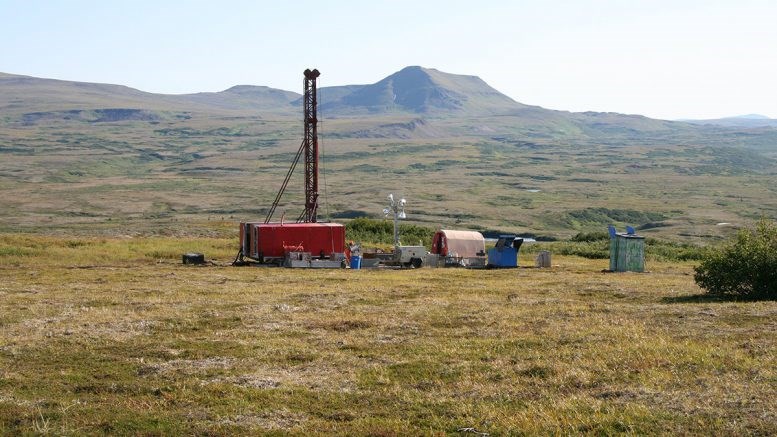Alaska has filed a motion with the U.S. Supreme Court to overturn a veto blocking Vancouver-based Northern Dynasty Minerals’ (TSX: NDM; NYSE: NAK) Pebble copper and gold project.
According to the state, the veto violates its sovereignty and a land swap deal with the U.S. that was made half a century ago.
The motion argues that the U.S. Environmental Protection Agency’s (EPA) veto of the Pebble project breaches a contract known as the Cook Inlet Land Exchange involving Alaska and the U.S., violating the federal statutory recognition and implementation of that accord. The motion also claims that the EPA’s veto is arbitrary and capricious, violating the Administrative Procedure Act.
Alaska asserts that the veto unconstitutionally withdraws 800 sq. km in the Bristol Bay region (where Pebble is located) from use for mining purposes, without just compensation. The bill of complaint seeks injunctive relief requiring the EPA to withdraw its veto and monetary damages.
Northern Dynasty said in an after-market statement Wednesday it supported the suit. President and CEO Ron Thiessen said Alaska’s complaint filing was a welcome development in the long Pebble saga.
“Northern Dynasty strongly, and I mean very strongly, supports all of the arguments set forth by the state, and we congratulate the state for bringing these claims directly to the U.S. Supreme Court,” he said in the statement.
Northern Dynasty intends to prepare and file with the Supreme Court appropriate briefs to support the state’s case.
In the 1970s, a land exchange was negotiated between the U.S. Government, the CIRI Native Alaskan Corporation, and Alaska, where the state received land in the Bristol Bay region to develop its mineral potential.
The U.S. Constitution allows states to seek direct jurisdiction in the U.S. Supreme Court for complaints against the federal government. Alaska believes that the court’s jurisdiction, in this case, is not discretionary and must accept the motion. The court is expected to decide on whether to hear the case as early as October.
Previous litigation by Northern Dynasty’s subsidiary, The Pebble Partnership, in 2014, made similar arguments to those made by the state in this Supreme Court filing. Still, the case was dismissed because the EPA veto was not yet deemed final.
Pebble has been through a roller coaster of regulations for the past 15 years. Former U.S. president Barack Obama opposed the project, and his successor Donald Trump ultimately did too, deeming it “too risky.”
President Joe Biden has openly expressed his opposition to the project, taking steps as soon as he took office in 2021 to permanently protect Alaska’s Bristol Bay.
As part of his administration’s measures against Pebble, the EPA blocked the company in January from storing mine waste in the state’s watershed, home to the world’s largest sockeye salmon fisheries.
Northern Dynasty has since raised doubts about its ability to continue if it cannot raise the necessary capital for the project and continue the permitting process for the mine.
The Pacific Ocean Division of the Army Corps of Engineers agreed in April to take another look at its refusal in 2020 to approve the project after Northern Dynasty successfully appealed the decision.
For decades, explorers and developers have been attracted to resources-rich southwestern Alaska, known for holding significant deposits of gold, copper, molybdenum and other minerals near the headwaters of two rivers flowing into Bristol Bay.
But conservationists, local activists, fishermen and federal regulators have argued that industrial, open-pit mining operations to extract the lode threaten the region’s thriving sockeye salmon fishery.
If and when the mine moves into production, it will be the largest in North America.

